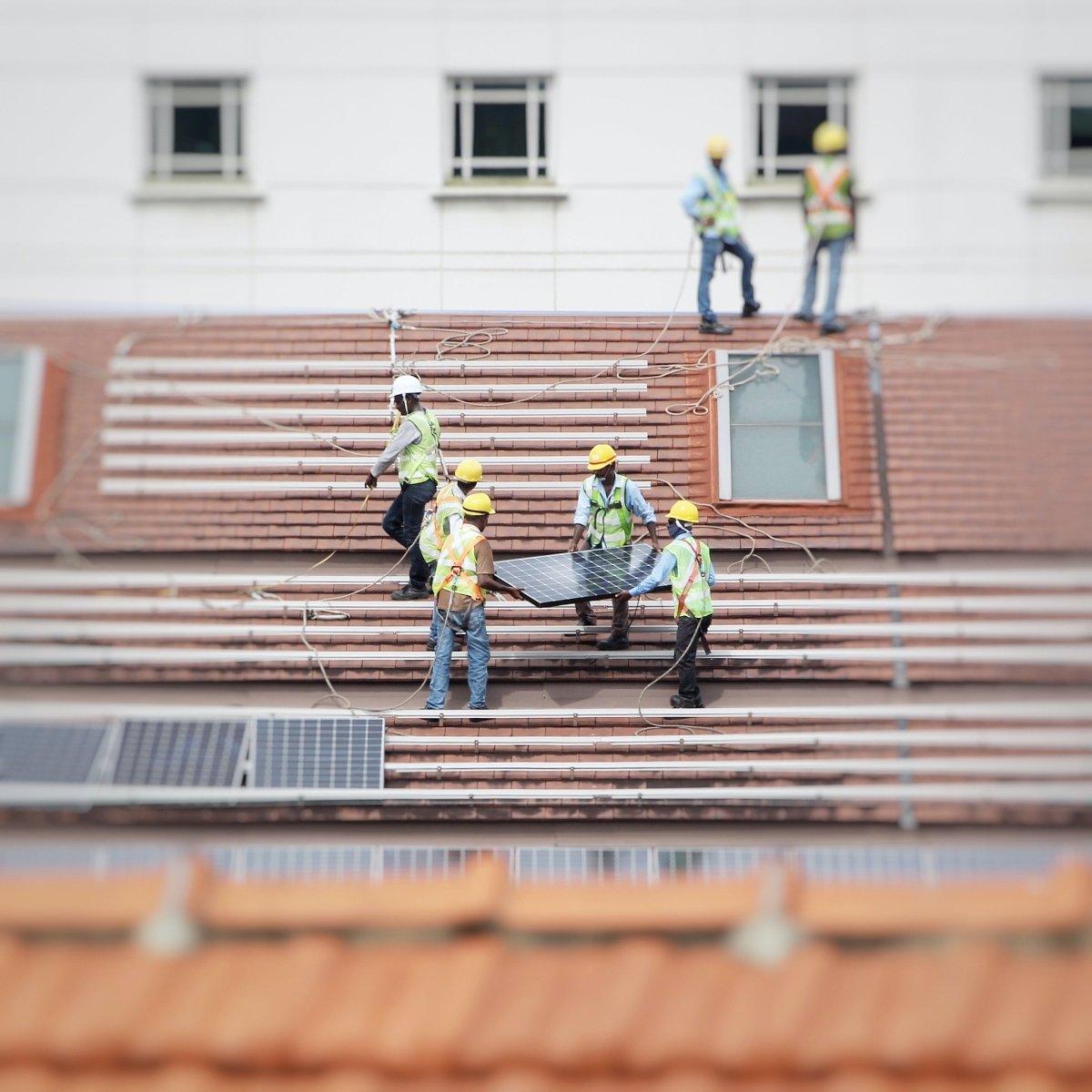9 Ways to Know If Your Rooftop is Suitable for Solar Panels

The rising costs of energy and the increasing urgency to combat climate change have fueled a growing interest in rooftop solar panels in the UK.
As homeowners seek ways to navigate the challenges posed by the cost of living crisis, solar panels have emerged as a promising solution to both reduce energy bills and contribute to a sustainable future. However, not every home is conducive to solar panel installations.
This guide aims to assist homeowners in evaluating the suitability of their rooftops for solar panels, covering various aspects ranging from roof angles to material considerations.
1. Assessing Your Roof's Suitability
Determining if your roof is suitable for solar panels involves evaluating several key factors. One of the primary considerations is the orientation of your roof. Solar panels ideally should face south at an angle of approximately 35 degrees to receive optimal sunlight throughout the day.
Additionally, potential obstructions such as neighboring structures or trees that may cast shadows on your roof should be taken into account, as shading can significantly impact the efficiency of solar panels.
2. Structural Integrity and Load-Bearing Capacity
Before embarking on a solar panel installation, it is crucial to ensure that your roof is structurally sound and capable of supporting the additional weight of solar panels.
Consulting with a professional installer can help assess your roof's load-bearing capacity and identify any necessary reinforcements.
Addressing any existing structural issues prior to installation is imperative to ensure the long-term stability of the solar panel system.
3. Compatibility with Roofing Materials
When considering solar panels, it's important to evaluate your roofing material's compatibility. Common materials like asphalt shingles, metal roofs, tar and gravel, and specific tiles are generally suitable.
However, traditional thatched or wooden roofs present unique challenges due to fire risks and durability concerns. Thatched roofs may lack the structural stability needed for solar panel installation.
For unconventional roofing materials, alternative solutions like ground-mounted systems may be explored.
4. Ideal Roof Angles and Pitch
The angle and pitch of your roof play a crucial role in the efficiency of solar panels. The optimal angle for solar panels is around 35 degrees, and the roof pitch ideally falls within the range of 30 to 40 degrees.
Understanding your roof's pitch and angle helps in positioning the solar panels for maximum energy production.
5. Regional Considerations for Climate and Daylight Conditions
Local climate conditions and daylight patterns can impact the efficiency of solar panels. Homeowners in regions with less sunlight during winter may need to make adjustments to optimise energy capture.
Consulting with local solar panel experts can provide insights into regional conditions and help tailor the solar panel installation to local climate considerations.
6. Directional Orientation for Maximum Efficiency
While south-facing roofs are optimal for solar panels in the UK, east or west-facing roofs can still generate considerable power.
North-facing roofs are less suitable, requiring additional adjustments to maximize energy production.
Adjusting the tilt angles of panels seasonally can further enhance efficiency, especially during winter months when the sun is lower in the sky.
7. Flat Roof Considerations
Homeowners contemplating solar installations on flat roofs must prioritize some key considerations to enhance the longevity and efficiency of their solar panel systems.
Flat-roofed homes may require specialized mounts to position their solar panels optimally, typically between 20 and 50 degrees for maximum sunlight exposure and energy yield.
Ensuring effective self-cleaning mechanisms may also be necessary on flat roofs, as this will help prevent debris build-up that could affect the solar panels' performance.
8. Roof Protection and Longevity
Contrary to misconceptions, solar panels can contribute to the protection of your roof. By acting as a barrier against adverse weather conditions, including snow, hail, heavy rain, and wind, solar panels provide an additional layer of defense.
The panels also have a cooling effect, helping to regulate temperatures and potentially extending the lifespan of the underlying roof structure.
9. Planning Permission and Regulatory Compliance
Ensuring a smooth solar panel installation involves checking local regulations and securing necessary planning permissions. While many installations proceed without explicit permission, adhering to local guidelines is vital.
Homeowners should inform their home insurance provider about the solar panel addition since it is considered as a structural modification to the roof.
This transparent communication helps maintain compliance, ensuring a hassle-free transition to renewable energy while abiding by local rules and safeguarding insurance coverage.
Conclusion
Switching to solar power represents a significant investment with long-term benefits. Homeowners can make informed decisions by carefully evaluating their rooftop's suitability based on the factors discussed. Consulting with local solar panel installers is indispensable, as they can provide personalised advice tailored to specific locations and home characteristics.
By carefully assessing the orientation, structural integrity, material compatibility, and other considerations, homeowners can unlock the full potential of their rooftops for solar panels.